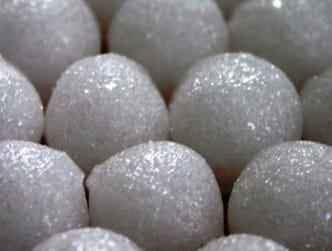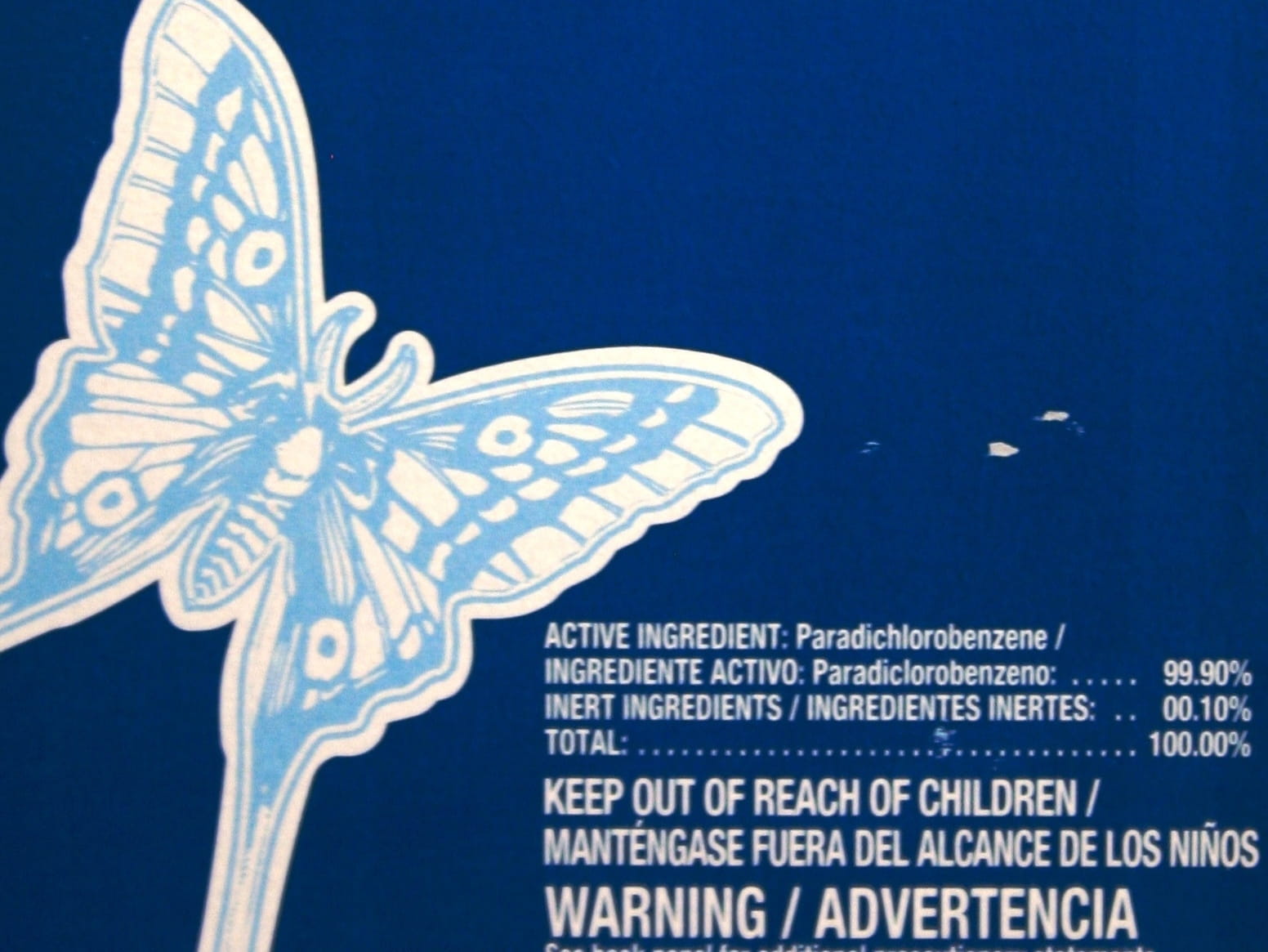Mothballs Can Be Poisonous

The Bottom Line
Mothballs are pesticides used to protect stored clothing from fiber-eating moths. They can be poisonous to people and pets if swallowed or if large amounts of fumes are inhaled.

What are mothballs?
Mothballs are used to protect stored clothing from several species of moths and their larvae (immature forms) that feed on natural fibers. In addition to balls, they can come as flakes or cakes. The active ingredient in most mothballs is naphthalene or paradichlorobenzene. These solid chemicals slowly turn into gases through a process called sublimation. In a closed container, these gases are deadly for the moths and their larvae. Mothballs are regulated as pesticides.Are naphthalene mothballs poisonous?
If swallowed, naphthalene can cause nausea, vomiting, abdominal pain, seizures, and coma. Naphthalene can damage red blood cells, causing kidney damage and many other problems. People with a deficiency of the enzyme glucose-6-phosate dehydrogenase (G6PD) are most likely to suffer red blood cell destruction. Screening for G6PD deficiency is not routinely done, so it is most often discovered as part of the diagnosis of a person with red blood cell loss.
Another rare result of naphthalene exposure is the creation of methemoglobin, an abnormal form of hemoglobin, the substance that carries oxygen in red blood cells. Methemoglobin does not carry oxygen, so its formation reduces oxygen delivery to the heart, brain, and other organs.
Breathing in naphthalene fumes over a period of time can cause poisoning, too. Children have been poisoned by wearing wool clothing stored with naphthalene mothballs, although this is rare.
Naphthalene mothballs are banned in the European Union and the United Kingdom because of their toxicity for humans and animals, as well as environmental concerns.
Are paradichlorobenzene mothballs poisonous?
In the US, paradichlorobenzene is the most common ingredient in mothballs and restroom deodorants, such as urinal cakes. Small, unintentional exposures to paradichlorobenzene are usually well tolerated, but they might cause skin or mouth irritation, nausea, vomiting, and headaches. Large ingestions and chronic exposure have resulted in impaired balance, muscle weakness, behavioral changes, and the destruction of red blood cells.
I think my child ate a mothball. What should I do?
If you think that someone has swallowed mothballs, give them a small amount of water to drink and then get guidance from Poison Control right away. Use the webPOISONCONTROL online tool or call 1-800-222-1222. Both options are free, confidential, and available 24 hours a day.
Rose Ann Gould Soloway, RN, BSN, MSEd, DABAT emerita
Clinical Toxicologist
Revised William G. Troutman, PharmD
Professor of Pharmacy Emeritus
Poison Control Media Information
Did you find this page helpful? If so, we need your support. Poison Control is in constant competition with misinformation online. Links to www.poison.org or our webPOISONCONTROL triage tool from other websites and blogs help internet searchers quickly find accurate information and Poison Control’s contact information in an emergency. If you use the content from this page, please provide attribution via a link back to this page, www.poison.org, or https://triage.webpoisoncontrol.org/#!/exclusions. By doing so, you could save a life. Thank you!
Poisoned?
Call 1-800-222-1222 or
Prevention Tips
- Be sure that loose mothballs and packages of mothballs are kept where children cannot find them.
- Follow all label directions carefully.
- Thoroughly clean clothes that are to be stored, then seal them in plastic bags to minimize the need for mothballs.
- Wash clothing and bedding that has been stored in mothballs before wearing or using them.
- Dispose of mothballs with other household hazardous waste.
This Really Happened
Case 1: A 19-month-old boy swallowed some mothballs containing paradichlorobenzene. He was brought to an emergency room, where he was given activated charcoal. He seemed fine, and his physical examination was normal. Three days later, his family took him back to the emergency room. His skin was yellow and he was fussy. His heart rate was fast and his hemoglobin concentration (reflecting red blood cells) was very low. The mothballs had caused some of his red blood cells to rupture. He was given a transfusion of red blood cells and admitted to the hospital. His hemoglobin concentration rose, and the boy recovered without additional problems (from Sillery et al., 2009).For More Information
References
Bates N. Mothball poisoning. Emergency Nurse. 2002;10:24-28.
Borke J. Naphthalene poisoning. MedlinePlus. Reviewed October 6, 2922. Accessed April 6, 2024.
Borke J. Paradichlorobenzene poisoning. MedlinePlus. Reviewed November 13, 2021. Accessed April 6, 2024.
Kim HK. Camphor and moth repellants. In: Nelson LS, Howland MA, Lewin NA, Smith SW, Goldfrank LR, Hoffman RS, eds. Goldfrank's Toxicologic Emergencies, 11th ed. McGraw-Hill Education; 2019. Accessed April 5, 2024.
Siegel E, Wason S. Mothball toxicity. Pediatr Clin North Am. 1986;33(2):369-374.
Sillery JJ, Lichenstein R, Barrueto F Jr, Teshome G. Hemolytic anemia induced by ingestion of paradichlorobenzene mothballs. Pediatr Emerg Care. 2009;25(4):252-254.
Todisco V, Lamour J, Finberg L. Hemolysis from exposure to naphthalene mothballs. N Engl J Med. 1991;325(23):1660-1661.
Poisoned?
Call 1-800-222-1222 or
Prevention Tips
- Be sure that loose mothballs and packages of mothballs are kept where children cannot find them.
- Follow all label directions carefully.
- Thoroughly clean clothes that are to be stored, then seal them in plastic bags to minimize the need for mothballs.
- Wash clothing and bedding that has been stored in mothballs before wearing or using them.
- Dispose of mothballs with other household hazardous waste.
